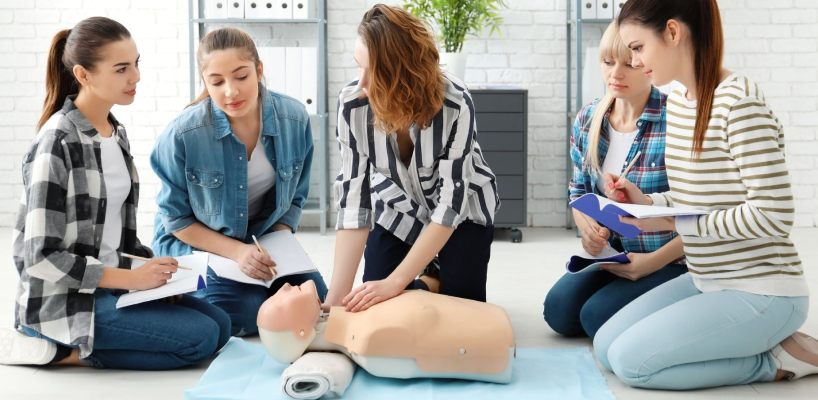
Last Updated On: September 9, 2024
Understanding the differences between Advanced Life Support (ALS) and Basic Life Support (BLS) is critical in emergency care. Both ALS and BLS are integral components of pre-hospital and in-hospital resuscitation efforts. However, they serve distinct purposes and involve different levels of training, interventions, and equipment.
ALS or Advanced Life Support includes advanced medical procedures that are administered by highly trained professionals. BLS focuses more on fundamental lifesaving skills that can be performed and mastered by anyone. It primarily includes cardiopulmonary resuscitation and airway management. Let’s find out more about ALS Vs BLS to optimize patient outcomes and deliver appropriate care in emergency situations.
What are the differences between ALS and BLS?
ALS (Advanced Life Support) and BLS (Basic Life Support) are two critical levels of emergency medical care. They have their own distinct roles and interventions. Here’s a concise overview of the key differences between ALS and BLS:
| ALS (Advanced Life Support) | BLS (Basic Life Support) |
|---|---|
| Training Level: Requires advanced training and certification, typically obtained by paramedics, physicians, and other advanced healthcare providers. | Training Level: Requires basic training in life-saving techniques, often provided to first responders, emergency medical technicians (EMTs), and lay rescuers. |
| Scope of Interventions: Involves advanced medical procedures, such as advanced airway management, intravenous (IV) therapy, medication administration, and cardiac monitoring. | Scope of Interventions: Focuses on fundamental life-saving interventions, including cardiopulmonary resuscitation (CPR), hemorrhage control, splinting, and basic airway management. |
| Equipment and Tools: Utilizes specialized equipment and tools, such as cardiac monitors, defibrillators, advanced airway devices (e.g., endotracheal tubes), and medication delivery systems. | Equipment and Tools: Relies on basic equipment, such as automated external defibrillators (AEDs), bag-valve-mask (BVM) devices, cervical collars, and basic first aid supplies. |
| Provider Roles: Administered by highly trained healthcare providers, including paramedics, critical care nurses, and emergency physicians, who can assess and manage complex medical emergencies. | Provider Roles: Often provided by first responders, EMTs, firefighters, and bystanders trained in basic life support techniques, who initiate immediate care until advanced medical assistance arrives. |
What does an ALS course cover?
An ALS (Advanced Life Support) course provides healthcare professionals with advanced training and skills necessary to manage complex medical emergencies effectively. Here’s an overview of the key topics covered in an ALS course:
Read More: How to Renew BLS Certification in 2024?
A BLS (Basic Life Support) course is designed to provide individuals with the fundamental knowledge and skills needed to respond to life-threatening emergencies. Here’s an overview of the key topics covered in a BLS course:
By understanding the nuances of ALS Vs BLS, you can sign up for a course of your choice and learn important life skills. While both ALS and BLS play vital roles in saving lives, they serve different purposes and involve distinct levels of training. With proper information and awareness, timely and effective response in critical situations can be guaranteed. Learn the differences between ALS and BLS to ensure the best possible outcome.
Read More: Everything you need to know about Nurse BLS certification